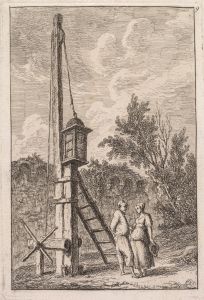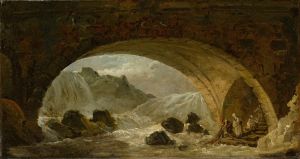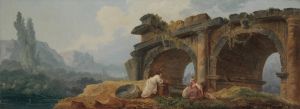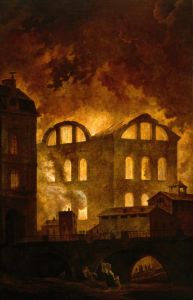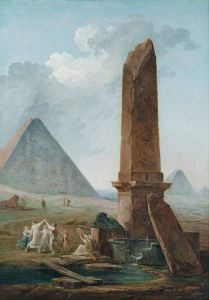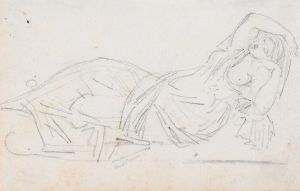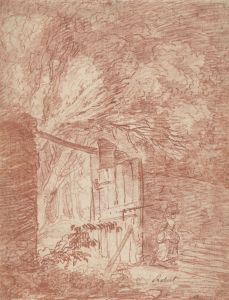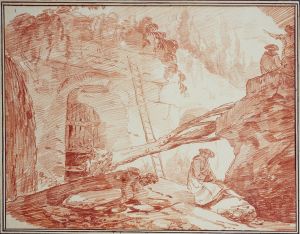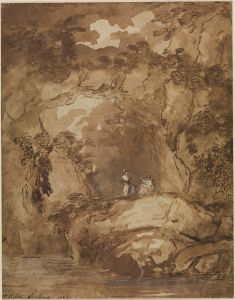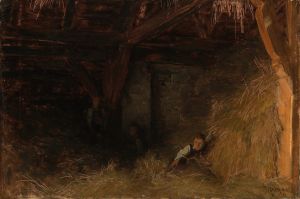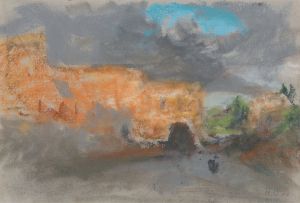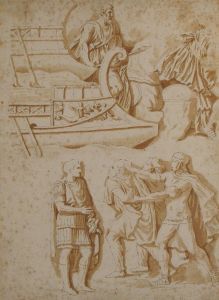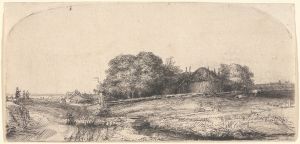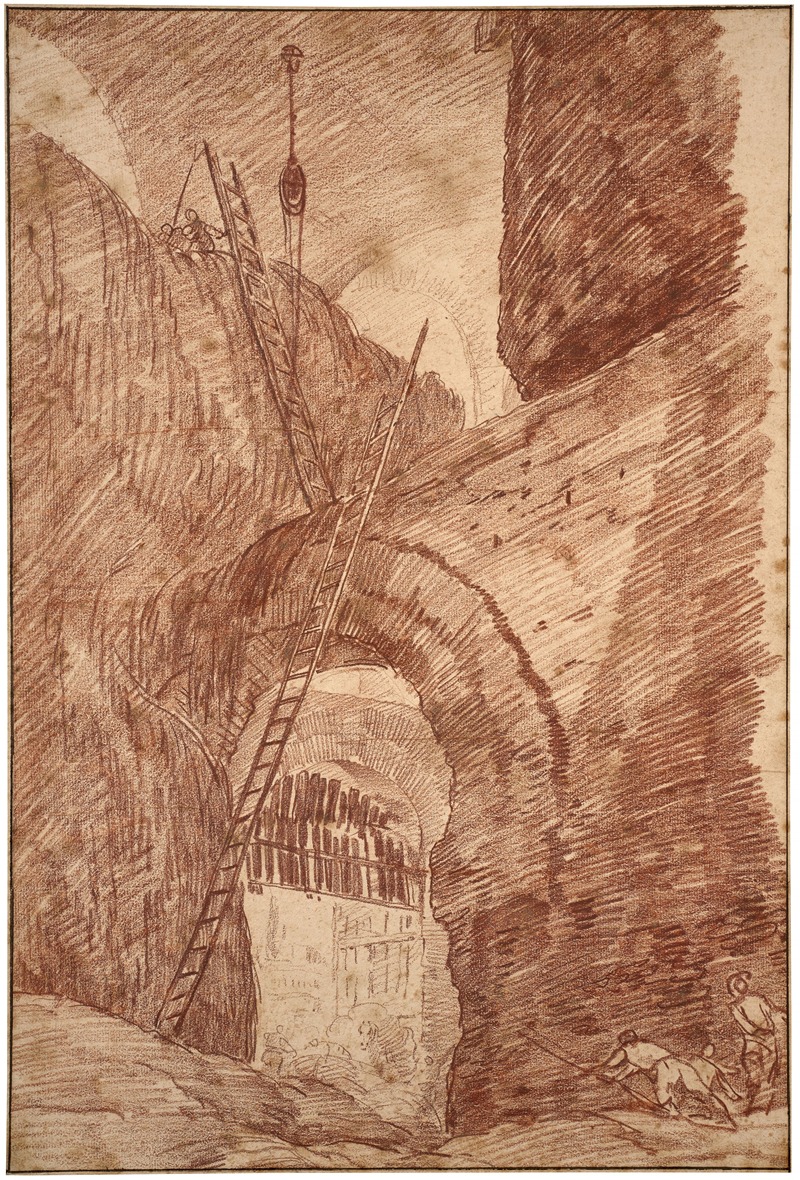
Hay barn in the ruin of the Emperors’ palace in Rome
A hand-painted replica of Hubert Robert’s masterpiece Hay barn in the ruin of the Emperors’ palace in Rome, meticulously crafted by professional artists to capture the true essence of the original. Each piece is created with museum-quality canvas and rare mineral pigments, carefully painted by experienced artists with delicate brushstrokes and rich, layered colors to perfectly recreate the texture of the original artwork. Unlike machine-printed reproductions, this hand-painted version brings the painting to life, infused with the artist’s emotions and skill in every stroke. Whether for personal collection or home decoration, it instantly elevates the artistic atmosphere of any space.
"Hay barn in the ruin of the Emperors’ palace in Rome" is a painting by the renowned French artist Hubert Robert, who was known for his depictions of architectural ruins and landscapes. Born in 1733, Robert became a prominent figure in the art world during the 18th century, particularly for his ability to blend the grandeur of classical architecture with the picturesque decay of ruins, a style that resonated with the Romantic sensibilities of his time.
This particular painting captures a scene within the ruins of what was once a majestic palace of the Roman emperors. Hubert Robert had a profound interest in Roman antiquity, which was fueled by his time in Italy. He spent several years in Rome, from 1754 to 1765, as part of his studies at the French Academy. During this period, he was deeply influenced by the ancient ruins that dotted the city, and these became a recurring theme in his work.
The painting illustrates a hay barn set amidst the remnants of imperial grandeur, a juxtaposition that highlights the passage of time and the transformation of spaces once associated with power and opulence into utilitarian structures. This theme of transformation and the passage of time is central to Robert's work, as he often explored the idea of nature reclaiming man-made structures.
Robert's technique in this painting, as in many of his works, demonstrates his skillful use of light and shadow to create a sense of depth and atmosphere. The play of light across the crumbling stone and the lush greenery that has begun to overtake the ruins adds a layer of romanticism to the scene. His attention to detail in rendering the textures of both the stone and the hay suggests a keen observation of the natural world and its interaction with human creations.
The painting is also reflective of the 18th-century European fascination with the ruins of antiquity, which were seen as symbols of the inevitable decline of great civilizations. This interest was part of a broader cultural movement that included the Grand Tour, during which young European aristocrats traveled to Italy to immerse themselves in the art and history of the classical world.
"Hay barn in the ruin of the Emperors’ palace in Rome" is a testament to Hubert Robert's ability to capture the beauty and melancholy of ruins. His work invites viewers to reflect on the transient nature of human achievements and the enduring power of nature. Through his art, Robert not only documented the physical remnants of the past but also evoked a sense of nostalgia and contemplation about the future.
Today, Hubert Robert's paintings, including this one, are appreciated for their historical significance and their contribution to the Romantic movement in art. His works are housed in various museums and collections around the world, where they continue to inspire and captivate audiences with their timeless beauty and evocative themes.





